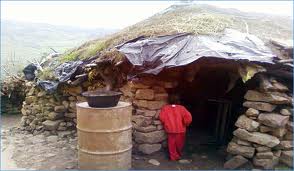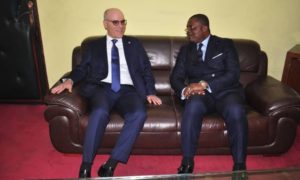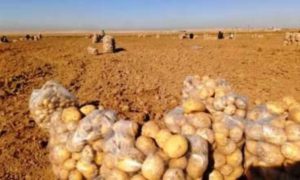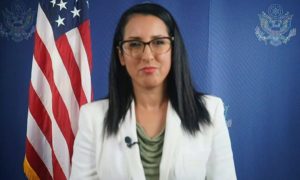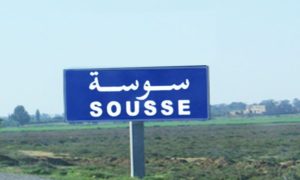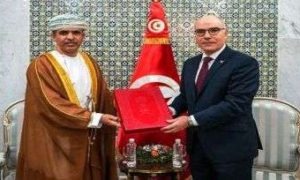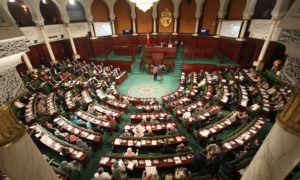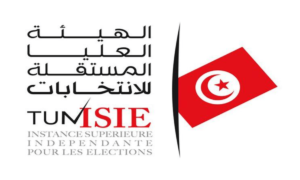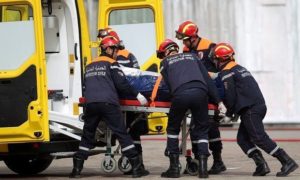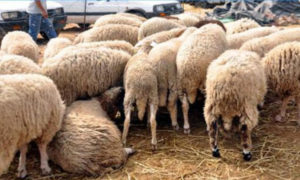The mapping of the rate of poverty in the country intimates that there is a high concentration of poverty in the centre-west and north-west of Tunisia, a report on the poverty map released on Wednesday maintained.
Developed by the National Institute of Statistics (INS) of Tunisia, in collaboration with the World Bank, the report indicates that although the incidence in the coastal regions of Greater Tunis and the North-East and Center-East is very low, however, there are a few delegations with a relatively high impact.
The concentration of poor people is largely observed in the non-coastal regions of central and northern Tunisia. The three delegations that record the highest poverty rates are Hassi El Frid, Djedeliane and El Ayoun, all concentrated in central Tunisia.
The delegations around Tunis, in particular El Menzah, La Goulette and Ariana Ville are among the least poor delegations in Tunisia.
Made up of four governorates (Tunis, Ariana, Ben Arous and Manouba) and 48 delegations, Greater Tunis is the wealthiest region of Tunisia in which the average poverty rate at the delegation-level is 6.1 and does not exceed not 15.2%, underlines the report which presents the poverty rate in the 264 Tunisian delegations.
The poorest delegations are Tebourba (15.2%), El Battane (14.5%), and Kalaat El Andalous (12.5%). The El Menzah (0.2%), La Goulette (1.1%), and L’Ariana Ville (1.3%) delegations have the lowest poverty rates in the region.
In the North-East, made up of three governorates (Nabeul, Zaghouan and Bizerte), although the average poverty rate is quite low (11.9%), there are still some pockets of poverty in certain rural areas of the governorate of Bizerte where the highest incidence of poverty is observed in the delegation of Sedjnane (39.9%), followed by Djoumine (36.6%) and Ghezala (34%).
Nabeul (4.7%), Dar Chaabane Fehri (4.9%) and Bizerte Nord (5.3%) have the lowest poverty rates in the region.
In the north-west, made up of four governorates (Beja, Jendouba, Kef and Seliana), the poorest regions are in the south-west part and a few in the north part. The poorest delegations are Neber (45.4%), El-Rouhia (40.7%) and Sakiet Sidi Youssef (39.7%).
The delegations of Jendouba Sud (10.7%), Bou Salem (16.6%), Tabarka (16.7%) and Seliana Nord (16.8%) have the lowest incidence of poverty in the region.
With an average poverty rate of 11.7%, the Center-East region, made up of 4 governorates (Sousse, Monastir, Mahdia and Sfax) and 56 delegations, is heterogeneous. The lowest poverty rate being 2.5% in Sfax Ville and the highest being 36.9% in Chorbane.
In addition to the aforementioned delegations, the poorest delegations are Ouled Chamekh (35%) and Hebira (33.4%), while Sfax Ouest (3.0%) and Sfax Sud (3.0%) count after Sfax Ville ( 2.5%) among those with the lowest poverty rates in the region.
The Center-West, made up of three governorates (Kairouan, Kasserine and Sidi Bouzid) represents one of the poorest regions with an average rate of 29.3% and with little heterogeneity among the governorates.
Poverty rates are never lower than the national level of 15.3%. Hassi Ferid (53.5%), Djedeliane (53.1%) and El Ayoun (50.1%) are the poorest delegations.
Sidi Bousille Ouest (17.4%), Passerine Nord (18.9%) and Souk jedid (20.8%) have the lowest poverty rates in the region.
With an average rate of 17.8%, the south-eastern governorates (Gabes, Medenine and Tataouine) are heterogeneous in terms of poverty, with richer pockets around urban areas and poorer pockets in rural areas.
The incidence of poverty is highest in Beni Khedache (36.9%), followed by the delegations of Menzel El Habib (33.6%) and Sidi Makhlouf (33.4%), but respectively low in Gabes Sud ( 9.4%) and Djerba Houmet Souk (9.5%).
In addition, the South-West region has relatively poor pockets in its North-East part and richer delegations around local urban areas. The average poverty rate is 18.2%.
The delegations of Belkhir (31.2%), Sned (27.2%) and Douz Sud (25.9%) are the poorest in the region.
Tozeur (10.3%), Kebili Nord (12.3%) and Gafsa Sud (15.4%) have the lowest poverty rates.
The report indicates that the performance of a social program for the fight against poverty depends essentially on the effectiveness of the geographic targeting of the smallest territorial units concentrating the poorest households.
Thus, this report will serve as a tool at the disposal of the public authorities in order to better achieve the objectives in terms of human development and the reduction of poverty and inequalities.
The calculation methodology makes it possible to estimate poverty and consumption-related inequalities at fairly fine levels of disaggregation, by combining information from censuses and household consumption surveys.
What's happening in Tunisia?
Subscribe to our Youtube channel for updates.



